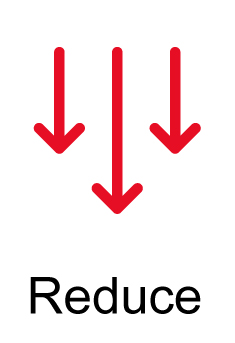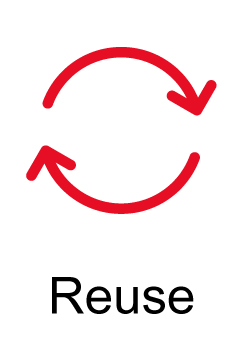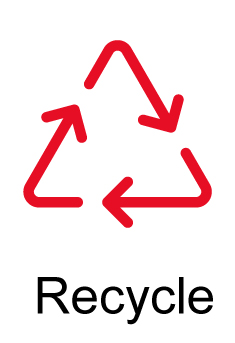| Saving energy isn’t just smart—it can be fun, too. |
|
| Welcome to MidAmerican Energy's e‑SMARTnews! |
|
As an educator, you play an important role in helping children adopt energy‑saving habits and an energy‑efficiency mindset. To assist you with this, see some energy education tips below. Find even more on the MidAmerican e‑SMARTkids website.
|
| Energy Efficiency Helps with Planet Preservation |
|
Our lifestyles have become increasingly reliant on technology. That reliance has led to greater levels of energy usage and misusage, which creates a substantial burden on the planet. Even though we are using more renewable energy than ever before, most energy companies still rely on fossil fuels to provide reliable service to their customers. And when those fossil fuels are burned to convert stored energy to usable forms of energy like electricity, we notice negative impacts to the environment. Using energy efficiently helps to counter those impacts and preserve the planet and its resources. Read on to learn about the steps you can take to conserve energy within your classrooms!
|
|
Simple Steps for Saving Energy at School
|
|
Did you know that billions of dollars’ worth of energy are wasted throughout K–12 schools annually? If every classroom were more intentional about their energy consumption, the collective savings could be spent on school programming and supplies instead—a far better use, wouldn’t you agree? Here are a few steps your classroom can take to begin saving energy today:
|
| Tips to Reduce, Reuse & Recycle a Valuable Classroom Resource |
|
Paper is arguably one of the most important resources in a classroom. It’s everywhere—bound in books and/or printed on for tests, activities and lessons. And yet, paper production, particularly from new materials, utilizes extensive amounts of energy. Once a paper source is selected, it must be chipped or pulped, hydrated, mixed and pressed, dried, smoothed and cut. So, how can a classroom be more conscientious about energy efficiency where this commodity is concerned?
|
|
Simple—through the 3 R’s: reduce, reuse and recycle. Here’s how:
|

|
|
Reduce the amount of paper used
|
| ◦ |
When possible, print double-sided tests and/or worksheets, and encourage students to use both sides of their writing paper.
|
| ◦ |
When possible, create PDFs to email home to students’ families or to post on a school portal, rather than including printouts to send home with students.
|
|

|
| ◦ |
Before discarding used notebooks at the end of the school year, remove unused sheets of paper to save for the next school year.
|
| ◦ |
Cut shapes from used paper that may be laying around at random. Distribute or save these for junk journaling, creating collages or to decorate the classroom.
|
|

|
| ◦ |
Producing brand new paper from recycled paper uses less energy. Recycle paper that cannot be reused or repurposed in the appropriate bins. Request a bin for your own classroom if possible.
|
|
| Saver vs. Zapper: Which One Are You? |
|
Now that we’ve covered some ways to be energy efficient at school, we want to draw attention to the subtle ways energy might be wasted at home. Below, we’ve listed several actions that contribute to saving energy … or zapping it! Go through the list, circling the statements that are most accurate for you. Try to be as honest as possible.
|
|
I try to open the blinds or curtains to let natural light in as often as I can.
|
I typically turn on a light whenever I enter a room and sometimes forget to turn it off.
|
|
I stack books or other objects near my air conditioner or heater.
|
I use a dishwasher instead of washing by hand.
|
|
Most of my light fixtures have LED bulbs.
|
Sometimes, I run the dishwasher when it is only half full.
|
|
I keep my TV, computer and/or gaming consoles plugged into a power strip.
|
I use cold water when washing my laundry.
|
|
I tend to use a microwave or toaster oven vs. the oven.
|
In the winter, I generally keep the heat set to 70 degrees or above.
|
|
I like to crack my windows in the winter to keep the room from getting too hot.
|
I can’t remember the last time I cleaned the air vents on my TV or gaming consoles.
|
|
Once you’ve circled the statements that apply to you, tally them based on color. If you have more blue or purple statements, you tend to be an energy saver. If you have more orange or pink statements, you tend to be an energy zapper.
|
|
No matter which you are, the point of this exercise is to become more mindful of the simple, often overlooked ways that energy is used and misused. And now that you’re more aware, you can help to lead the charge (pun intended) toward becoming more energy efficient at home and in your classrooms.
|
|
Access Additional Resources on our e‑SMARTkids Website!
|
|
Your students can explore our e-SMARTkids website to learn even more about energy efficiency. There, they’ll find activities, an FAQ section, games and more!
|
|
|

